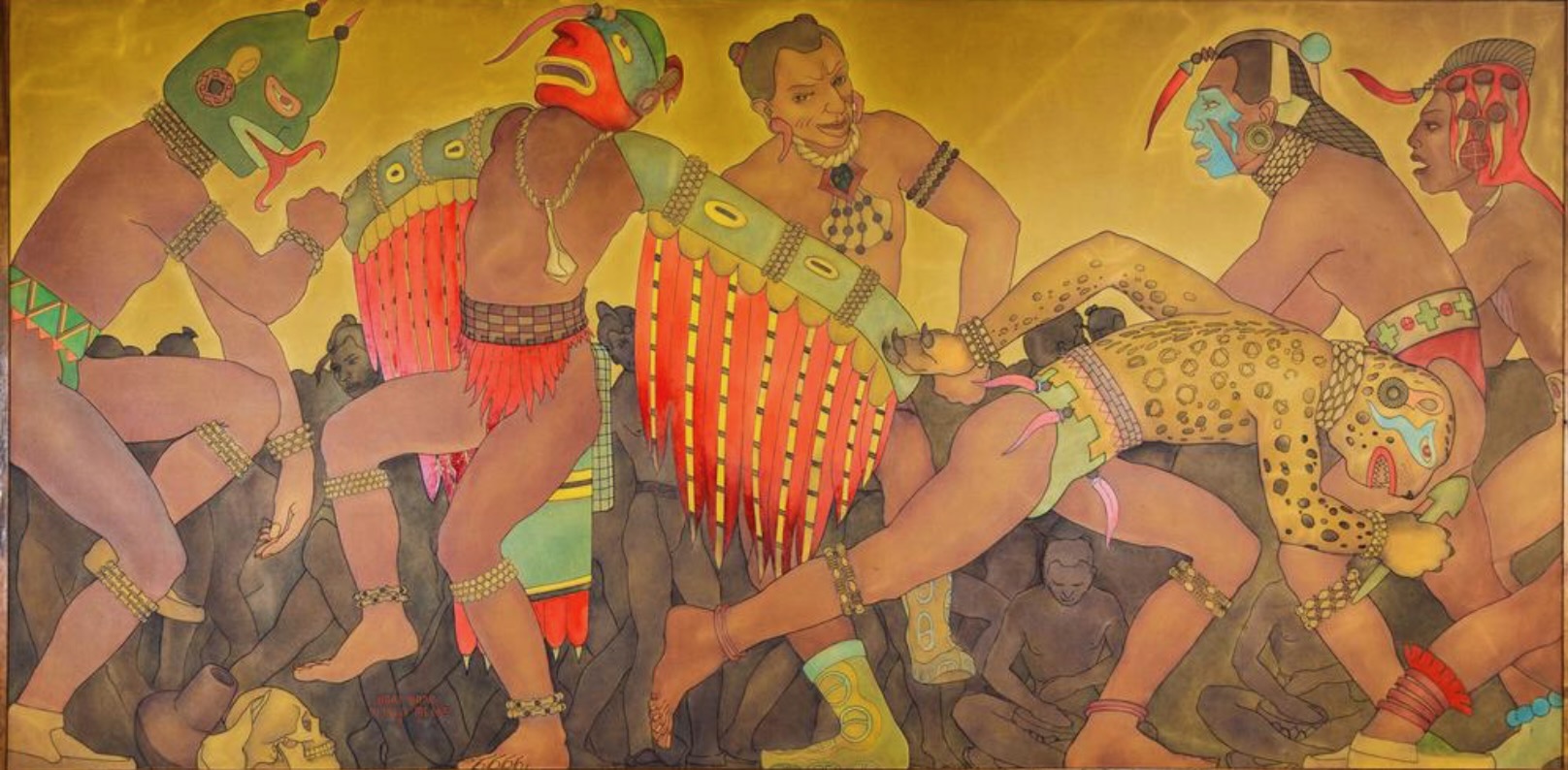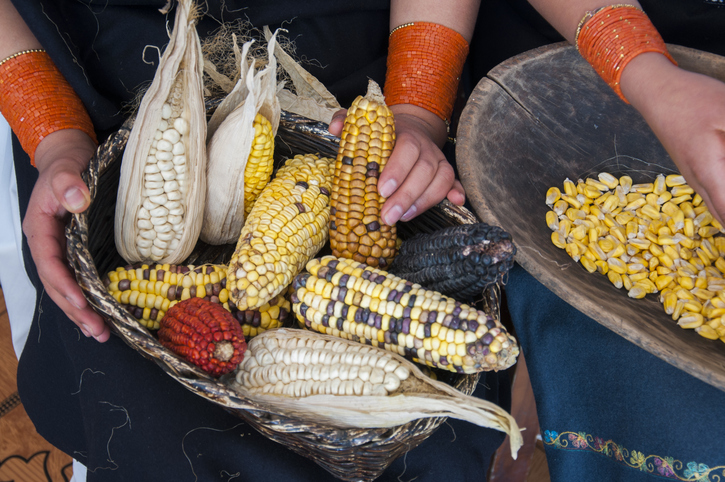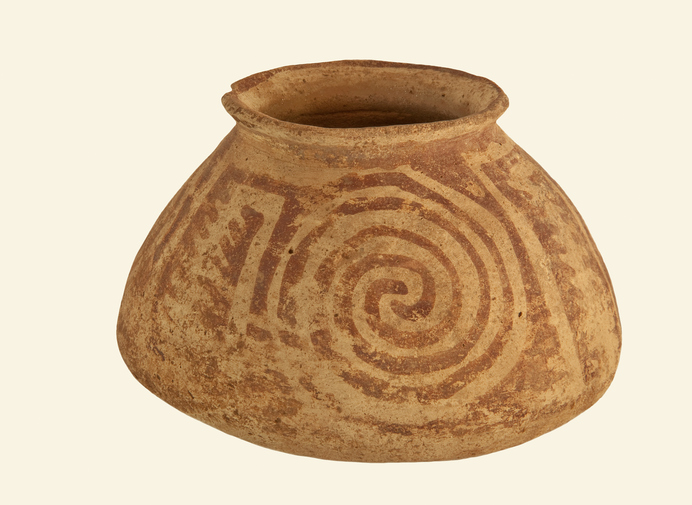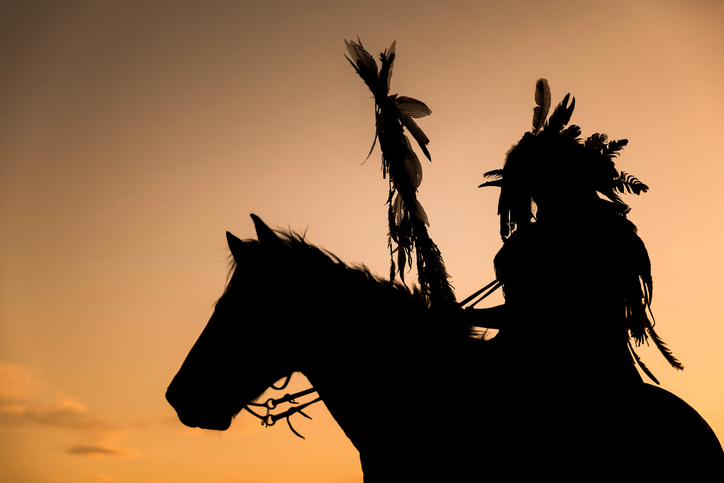Native American Mound Builders
Native American Mound Builders were ancient Oklahomans who lived by the Arkansas River near Spiro, Oklahoma, between 500-1500 AD. Visit the mounds today, and you’d be forgiven for not understanding their significance. Yet, underneath those gently sloping hills once lay a treasure trove of Pre-Columbian artwork that revealed a hard-working, intelligent people skilled in art, farming, and, when necessary, making war.
Photo from the Oklahoma Historical Society.
So, who were these mysterious people?

Today, we don’t even know what they called themselves, but through
painstaking research, archeologists have uncovered much about this lost
civilization. Native American Mound Builders lived throughout much of
what is now the United States. Archeologists have divided them into
three groups, depending on their location.
The Adena
Moundbuilders lived in the area that is now Ohio and Indiana. The
Hopewell Mound Builders lived there as well. But the Mississippi
Moundbuilders lived in scattered communities from the Great Lakes to the
Gulf of Mexico and also near Florida. A group of Mississippi Mound
Builders also lived in what is now eastern Oklahoma.
Why Did They Build the Spiro Mounds?
Mound Builders built the Spiro Mounds as well as other mounds for a variety of purposes. Sometimes the mounds were used for burial purposes, especially for chiefs who died either from natural causes or while in battle. The Craig Mound, part of the Spiro Mound was used for this purpose, and human bones (and possibly the femur bone of a giant), have been found in the mound.
These mounds were also sometimes used for worship. The Mound Builders worshipped the sun. They considered their chiefs to be representative of their god, the sun. Also, as time went on, the elites among the tribe lived in some of the mounds.
What Did Native American Mound Builders Do?
To survive, the Native American Mound Builders hunted deer and other smaller animals. They also fished, using spears, traps and nets. They also made a liquid that was toxic to fish but not to humans. They would drop this liquid into the water, and then collect the fish as they floated to the surface.

They also gardened, using the rich soil near the river bank, and watering their gardens using the fresh water from the river.
Eventually,
the Mound Builders developed an edible type of corn that could be
dried, pounded into a flour and used to bake a type of bread. They found
they could store this corn for years.
Form of Government
The mound builders ruled themselves through chiefdoms. One man was chosen as chief, usually because of his bravery in battle. Then, when he died, another chief was chosen. Eventually, the position of chief was passed down from father to son.
The chief would collect a percentage of corn from every family and store it for preparedness when the weather and crops failed. As the corn grew increasingly valuable, the mound builders focused on growing corn, other fruits, and vegetables. When plenty of food was on hand, Native American Mound Builders could devote their time to arts and sciences.
Oklahoma Mound Builders Became Artists and Scientists

The mound builders devoted their time to making pottery and engraving shells. They made beautiful copper plates and beads out of stone and wood. They also made jewelry out of freshwater pearls.
They also took up the study of astronomy and divided the years into lunar months. Their civilization was so advanced that people later on denied that local people could have accomplished so much. Instead, they gave credit to wandering Hebrews from Jerusalem.
The Oklahoma Mound Builders Were Also Warriors

Not all neighboring communities were friendly, so the Oklahoma Mound Builders developed a standing army that they used both for defense and to attack other communities.
Unfortunately, their armies weren’t strong enough to withstand the attacks that were coming.
Native American Mound Builders and the Conquistadors

Conquistadors from Spain, including Hernando DeSoto, visited the New World in the 1500s, looking for gold. Unfortunately, the Mound Builders didn’t have any gold. DeSoto suspected the Mound Builders were hiding the gold and killed some of them.
What Mound Builders the conquistadors didn’t kill outright, they killed in indirect ways through the viruses they spread. Smallpox and influenza struck the tribes, and many of them died as a result. The Mound Builder civilizations eventually disappeared, and the mounds were abandoned.
Today, the mounds are all that are left of these civilizations. Grave robbers tunneled through the largest of the Spiro Mounds and destroyed many ancient relics, selling the most valuable of the artwork and pottery to collectors around the world. However, you can still see some of these valuables in museums such as the Philbrook Museum in Tulsa, Oklahoma, the Cowboy Hall of Fame and Western Heritage Museum and other museums around the country.
Ready To Learn More?
Watch the video below to learn more about the ancient Oklahomans who lived near the Spiro Mounds.

The Heavener Runestone - Was Oklahoma Visited by Vikings?
